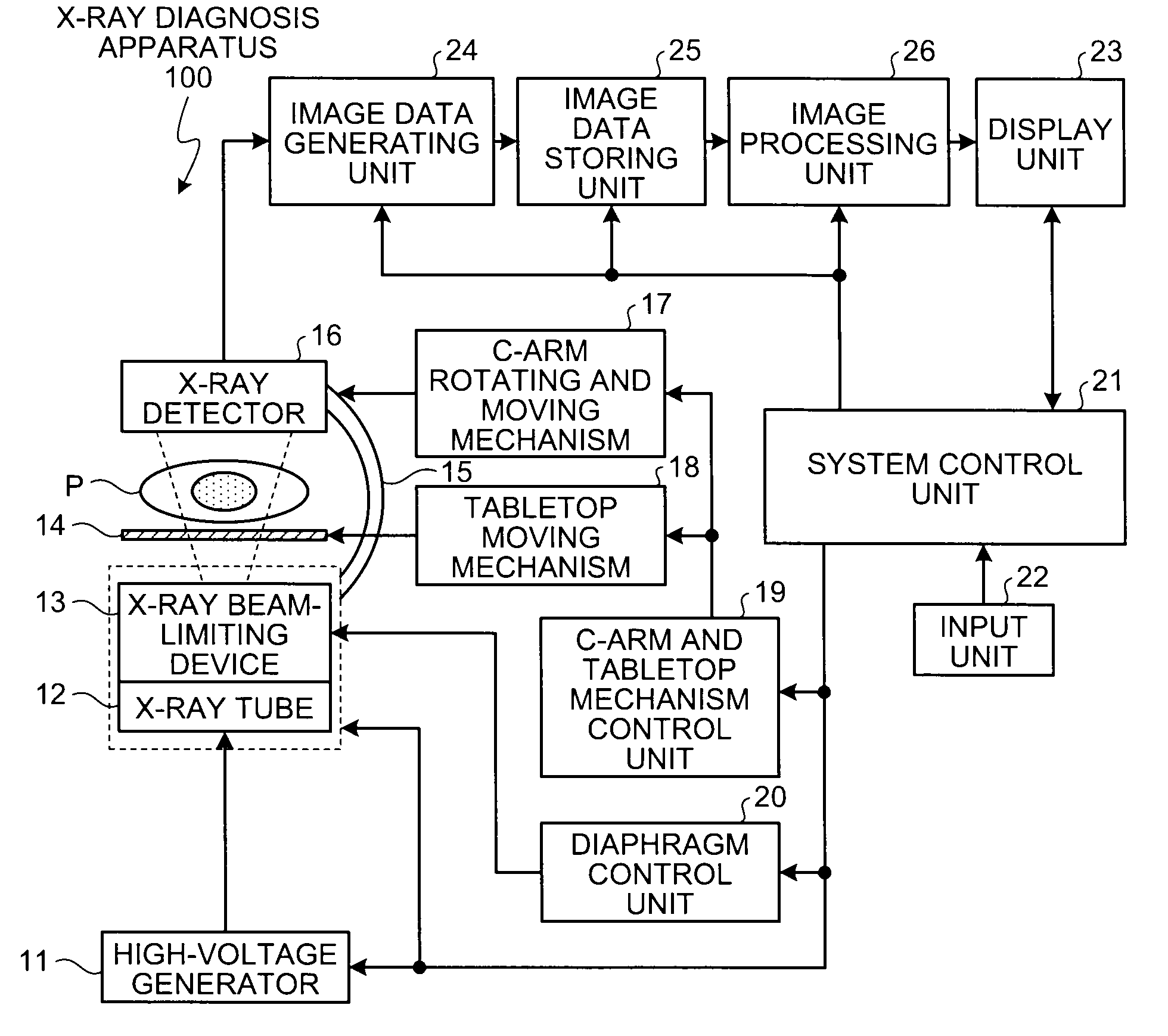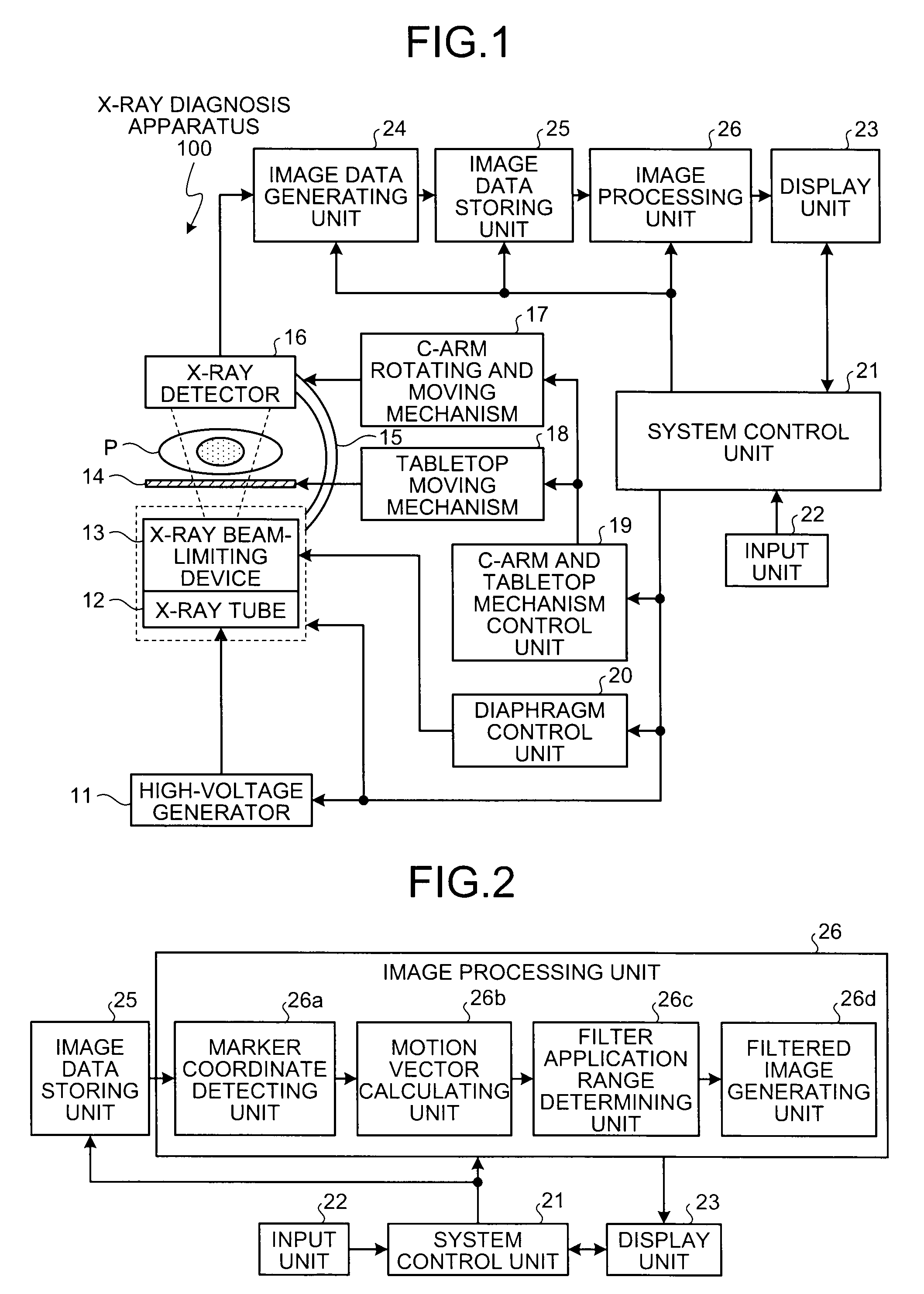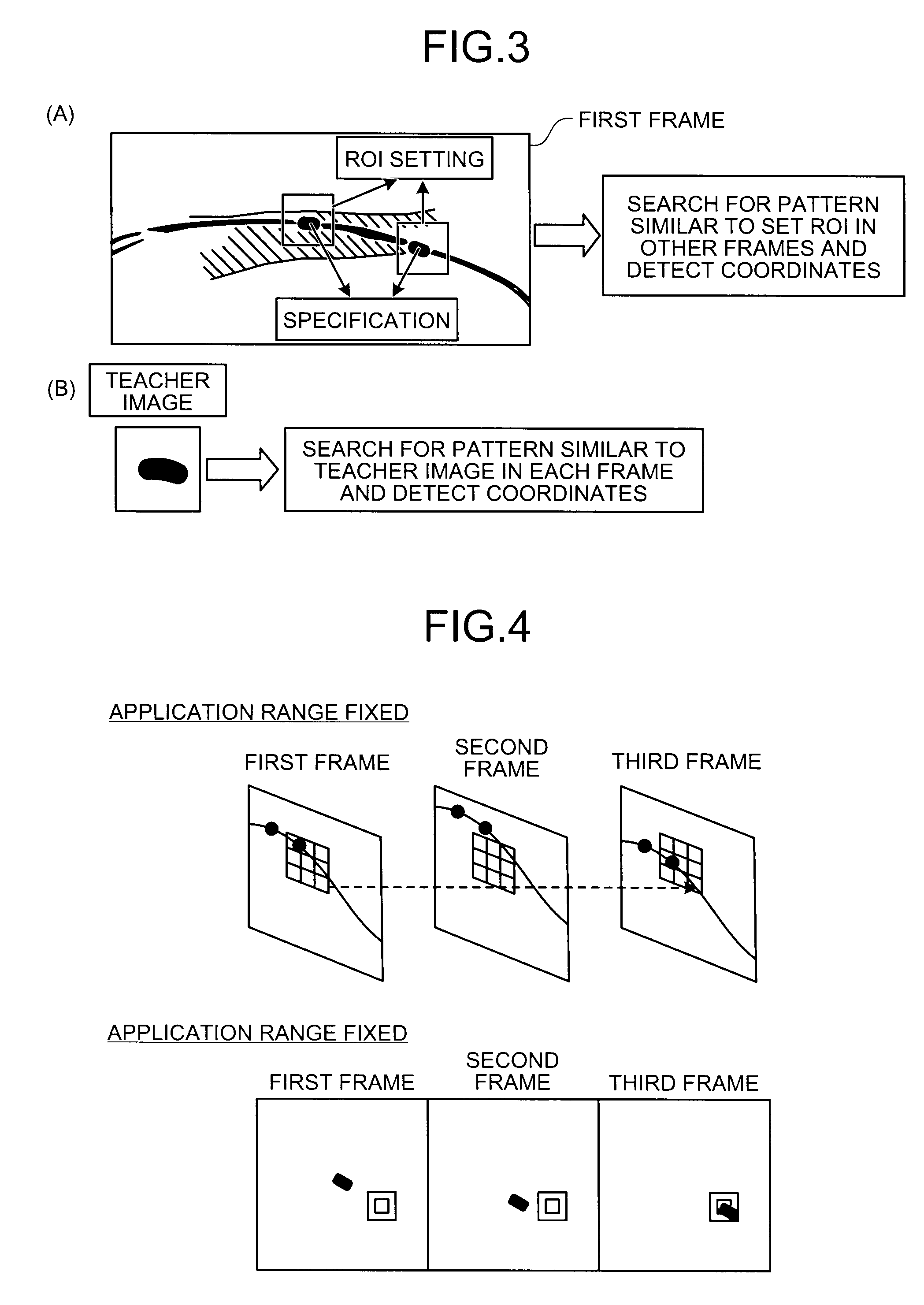X-ray diagnosis apparatus and image processing apparatus
- Summary
- Abstract
- Description
- Claims
- Application Information
AI Technical Summary
Benefits of technology
Problems solved by technology
Method used
Image
Examples
first embodiment
[0042]The X-ray diagnosis apparatus 100 in the present embodiment is mainly characterized in that the noise reducing effect by the smoothing filter can be always ensured by performing a process by the image processing unit 26 that is explained in detail below with reference to FIG. 2 to FIG. 5. FIG. 2 is a diagram for explaining a configuration of an image processing unit FIG. 3 is a diagram for explaining a marker coordinate detecting unit, and FIGS. 4 and 5 are diagrams for explaining a filter application range determining unit.
[0043]As shown in FIG. 2, the image processing unit 26 includes a marker coordinate detecting unit 26a, a motion vector calculating unit 26b, a filter application range determining unit 26c, and a filtered image generating unit 26d.
[0044]The marker coordinate detecting unit 26a detects coordinates of the stent markers attached to the balloon of the stent with the balloon for each of a plurality of X-ray images (fluoroscopic images) in a time sequence stor...
second embodiment
[0076]The marker coordinate detecting unit 26a in the second embodiment performs the process of detecting the coordinates of the stent markers on the high-frequency component image separated from an original image by the frequency component separating unit 26e.
[0077]The motion vector calculating unit 26b in the second embodiment performs the process of calculating the motion vector by using the coordinates of the stent markers in the high-frequency component image detected by the marker coordinate detecting unit 26a. In other words, the motion vector calculating unit 26b in the second embodiment calculates, with the coordinates of the stent markers detected in the high-frequency component image in the first frame as the reference coordinates, the motion vector of the coordinates of the stent markers detected in each high-frequency component image in the second and subsequent frames with respect to the reference coordinates.
[0078]The filter application range determining unit 26c in ...
third embodiment
[0090]The filtered image generating unit 26d in the third embodiment performs the noise reducing process using a spatial filter described in “Nambu K, Iseki H. A noise reduction method based on a statistical test of high dimensional pixel vectors for dynamic and volumetric images. Riv Neuroradiol 2005; 18:21-33.” and “Nishiki, Method for reducing noise in X-ray images by averaging pixels based on the normalized difference with the relevant pixel, Radiological Physics and Technology, Vol 2, 2008” after the application range determining process by the filter application range determining unit 26c is performed.
[0091]Specifically, the filtered image generating unit 26d calculates the difference value between each pixel in the process target image and pixels in a predetermined range in a spatial direction by using pixel values of pixels corresponding to the process target image in the application range of the reference image. Then, the filtered image generating unit 26d newly calculates ...
PUM
 Login to View More
Login to View More Abstract
Description
Claims
Application Information
 Login to View More
Login to View More - R&D
- Intellectual Property
- Life Sciences
- Materials
- Tech Scout
- Unparalleled Data Quality
- Higher Quality Content
- 60% Fewer Hallucinations
Browse by: Latest US Patents, China's latest patents, Technical Efficacy Thesaurus, Application Domain, Technology Topic, Popular Technical Reports.
© 2025 PatSnap. All rights reserved.Legal|Privacy policy|Modern Slavery Act Transparency Statement|Sitemap|About US| Contact US: help@patsnap.com



